10 of the Longest Golf Balls to Try in 2024
These 10 golf balls top the distance charts for the players they're designed for

If you’re looking for the longest golf balls, it might seem obvious to pick any ball that has the word “distance” or some other similar word in the name. There are plenty of those, like the TaylorMade Distance Plus, Titleist Velocity, Bridgestone e9 Long Drive, and even the Nitro Ultimate Distance.
It would seem no matter who you are, if you played one of these balls, you’d be maxing distance from your golf ball.
It would seem.
I've been covering golf equipment for a long time, and I've personally played and tested countless golf balls, from the most affordable distance balls to the most expensive tour balls. The truth is that there is not one golf ball that’s longer than all the others for all players. This much, however, is true: Generally speaking, the firmer the golf ball, the farther it goes.
That statement applies to players with swing speeds much slower than tour speeds.
If you’re just looking for the longest golf balls out there, those are generally the tour quality balls, the Pro V1x, and the like. All of these balls have carry distances that approach 300 yards with swing speeds of 115 mph with the driver. The difference between most of them is one to four yards at best.
Here’s another factor to consider: The slower your swing speed is, the less the difference is between the longest balls and the shortest balls. If you swing under 90 mph, those tour-level urethane balls all produce about the same distance. You might be better off with one of the so-called distance balls with a softer core.
Also, there’s the notion that balls that spin less off the driver produce more distance. They won’t balloon, and perhaps they will run a little more, but if you swing at a lower speed, say 80 mph or less, less spin off the driver doesn’t produce more distance. Spin can help keep your ball in the air, which can be a really good thing, especially in soft conditions where you don’t expect much roll.
The bottom line is, the distance equation is different for different golfers. There’s also a question of value. If you are a high-handicapper – or any level player for that matter – and you can get 201 yards out of a ball that costs $15 a dozen, or 203 yards from a ball that runs $60 a box, you’re probably not going to want to spend the extra $45 to two more yards under ideal conditions.
With all that said, this list of the longest golf balls is certainly not a one-size-fits-all list. Here we take a look at the longest 3-piece and 4-piece balls, and the less expensive 2-piece options, the latter of which is where the majority of golfers live.
Maxfli Tour X

GolfLink thoroughly tested the Maxfli Tour X, and left thoroughly impressed
BUY AT DICK'S
Best for: Better players with higher swing speeds
Construction: 4-piece, urethane cover
Don’t be fooled by the fact that Maxfli is a house brand for Dick’s or that you don’t see a lot of Tour players using the Maxfli Tour X – though these premium Maxfli balls are getting some play on tour this year, including from Lexi Thompson. This is a seriously good ball that goes far, especially if you swing over 100 mph.
In independent tests, the Maxfli Tour X has consistently ranked near the top when it comes to distance among all golf balls.
It’s a very firm four-piece ball that launches high and also spins well around the greens. If you’re a low-handicap golfer, it should definitely be a consideration, and as a bonus, it has a more attractive price tag than some of the other premium balls on the market.
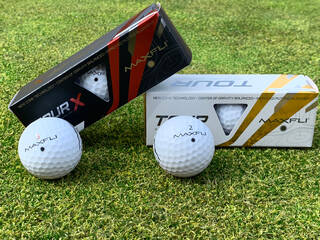
Maxfli Tour vs Tour X: Tested & Reviewed
Wilson Staff Model X
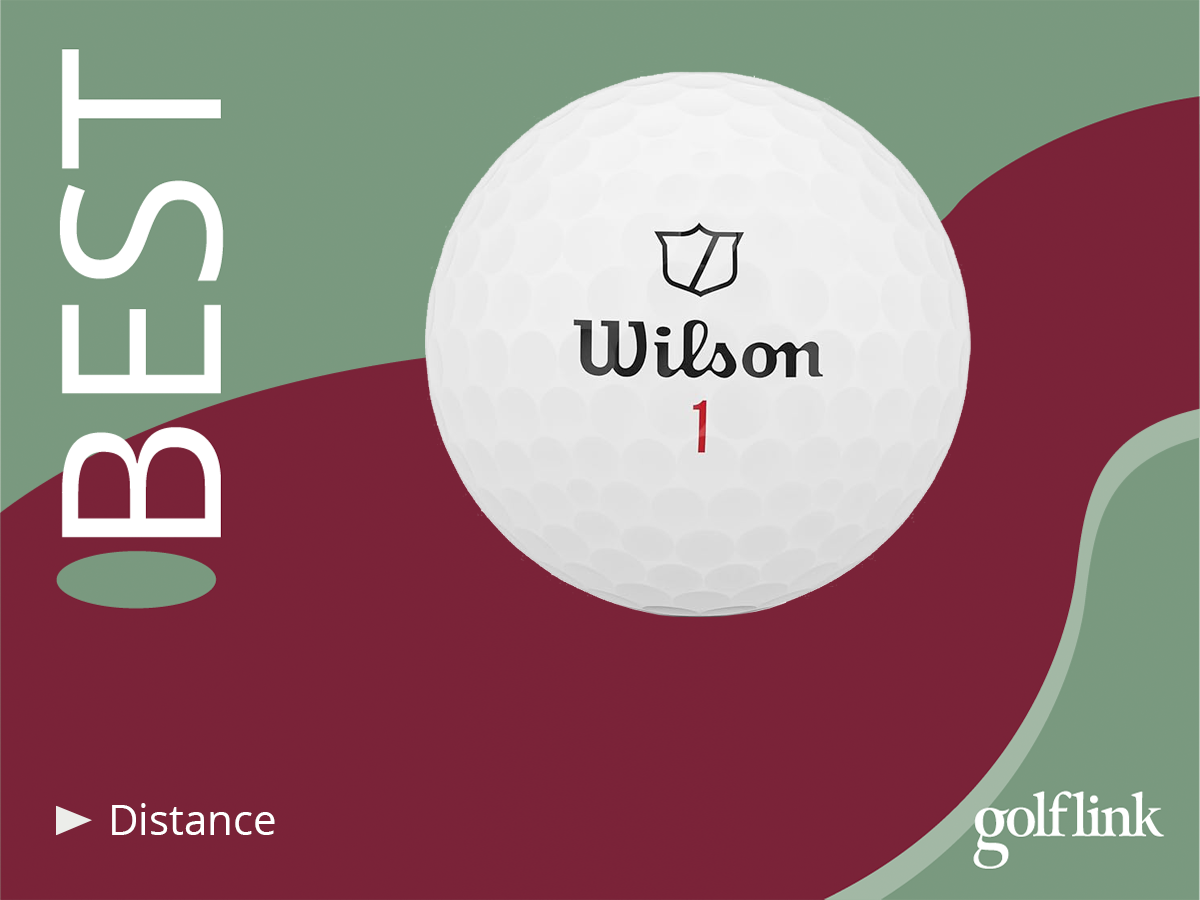
FIND ON AMAZONBUY AT WILSON
Best for: Low-handicap players with higher swing speeds
Construction: 4-piece, urethane cover
Here is another ball that doesn’t exactly come to mind when you think of tour-quality balls, but like the Maxfli, it’s firm (104 compression, according to Wilson) and very long for most players with decent to high swing speeds.
The Model X might not check up quite as easily around the green as the regular Wilson Staff because it’s so firm, but if you can swing it hard, this is the one that will get you a little more distance.
Callaway Chrome Tour X

FIND ON AMAZON
Best for: Players with higher swing speeds who prefer softer feel
Construction: 3-piece, urethane cover
The Chrome Soft (65 compression) and other versions of the ball ushered in a whole new category when they were introduced a decade ago as a tour ball with a soft feel. The newer Chrome Tour and Chrome Tour X are firmer balls (still perhaps softer feeling than most tour balls) that are right up there with the longest balls in golf.
The new Chrome Tour balls have a HyperFast softcore, new mantle layers, and a softer urethane cover. The Tour X, with a compression of 98, is simply longer than most balls on the market in any category, but is best appreciated by those with higher swing speeds. If your swing is closer to 100-105 mph, the Chrome Tour might be for you. And yes, the Chrome Soft is still an overall great ball for players of every swing speed.
Titleist Pro V1x
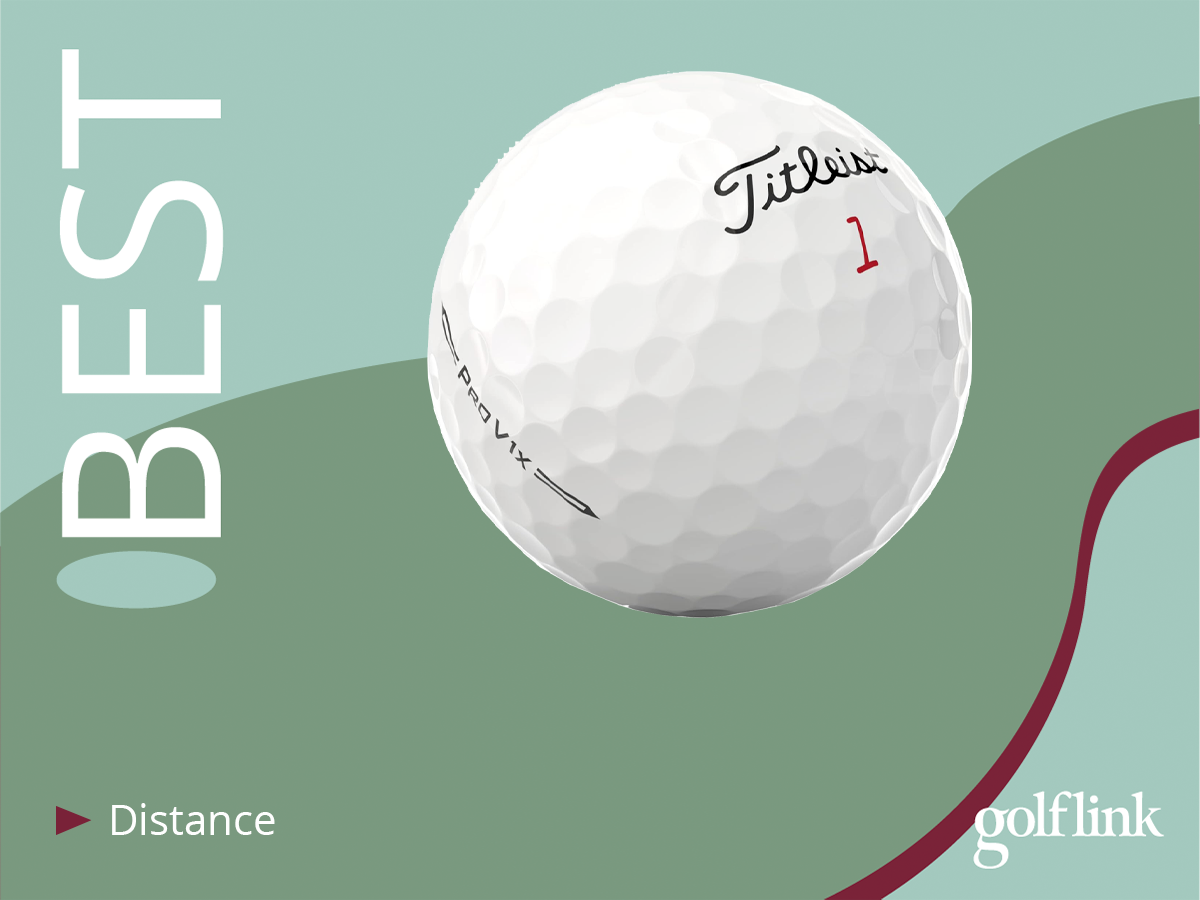
FIND ON AMAZON
Best for: Better players with lower ball flight and high swing speeds
Construction: 4-piece, urethane cover
The Titleist Pro V1 and Pro V1x aren’t the longest golf balls on the market, according to several independent tests, but they are still the benchmark. And here’s the deal: They don’t trail the longest balls by much, maybe a yard or two at best, depending on swing speed.
In other words, they are still really long and a good bit longer than almost all two-piece balls on the market, no matter what your swing speed is.
As for which ball you should choose, that’s a matter of personal preference. The Pro V1x spins a little less and launches higher than the Pro V1. If you swing 115 mph or faster, this ball never seems to come out of the air. Even at my swing speed, which is just south of 100 mph, I found the Pro V1x to carry well because of its higher launch.
TaylorMade TP5x

FIND ON AMAZON
Best for: Low-handicap, higher swing speed players
Construction: 5-piece, urethane cover
The only five-piece balls on the market (TP5s), the TP5x from TaylorMade is also among the longest balls in golf. It’s firm, but has a great feel to it. Most of all, it goes. With low spin off the driver, the TP5x produces exceptional distance for fast swings.
If you have a slower swing speed, this probably isn’t the ball for you, especially considering it's at the top of the price range for golf balls. But if you’re a serious player with decent clubhead speed, it’s definitely worth a try given that TaylorMade claims this TP5x is a half club longer than the previous version of this ball.
Bridgestone e9 Long Drive

Bridgestone e9 Long Drive golf ball
Find on AmazonBuy at Golf Galaxy
Best for: Any player looking for distance
Construction: 2-piece, Surlyn cover
If you’re looking for pure distance, then it makes sense to play a ball designed for long drive competitions. That ball would be the Bridgestone e9 Long Drive.
This one goes against the grain of a lot of two-piece balls. It’s firmer than most of them (the e9 Long Drive has a compression of 75, according to Bridgestone) which is one of the reasons the premium tour balls go so far.
The distance-centric technology in the e9 Long Drive starts with something Bridgestone calls “extreme gradational” core technology. It’s a fast outer region for increased ball speed, combined with a soft inner area to provide spin control and consistent ball flight. The 330-dimple pattern cover is designed to reduce drag.
Pinnacle Rush
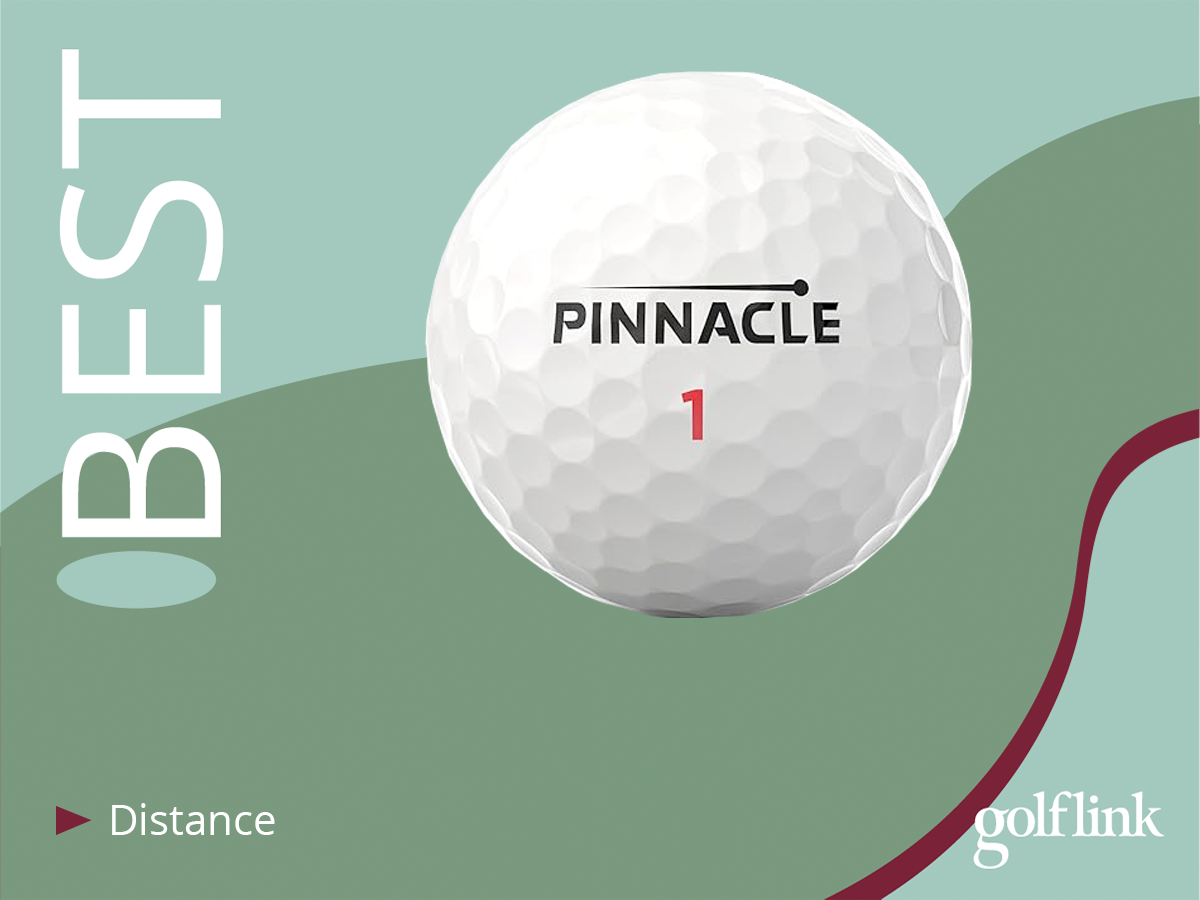
FIND ON AMAZON
Best for: Players with slow to medium swing speeds
Construction: 2-piece, ionomer cover
Definitely one of the longer two-piece balls on the market, the Pinnacle Rush is also quite economical. And it has a better feel than you might think.
I actually put one of these in play for a few holes during a recent round, and it really did go. My guess is that it’s optimized for driver swing speeds of 100 mph or less. It has a high-energy core and a relatively soft ionomer cover, so it has some feel to it.
This is a ball I could definitely play with in casual rounds, and at $20 for a 15-pack, it’s hard to beat the price.
Titleist Velocity

Titleist Velocity golf ball
FIND ON AMAZONBUY At Golf Galaxy
Best For: Players with low to moderate swing speeds
Construction: 2-piece, ionomer cover
Titleist markets this ball for the player who is looking for distance above all else. Having played the Titleist Velocity on occasion, I can concur with that assessment.
For me, the Velocity always just felt hot, without a lot of feel on the irons or around the greens. I could get it to hold receptive greens, but don’t expect much spin out of bunkers or on greenside pitches with this Titleist offering.
The Velocity’s distance characteristics come from its high-speed LSX core and what Titleist calls a fast NaZ+ cover. There’s also a spherically-tiled 350 octahedral dimple design on the cover, which also enhances ball speed.
Callaway Supersoft

FIND ON AMAZON
Best for: Golfers with slower swing speeds
Construction: 2-piece, ionomer cover
If you’re clubhead-speed-challenged, then you should definitely take a look at the Callaway Supersoft. At least one independent ball test placed this at the top of the list for driver speeds of 85 mph. If you swing over 100 mph, though, you probably won’t see the same benefit.
The bonus is that the Callaway Supersoft also has great feel to it, which is amplified for the slower swingers. It’s a great ball for seniors, many women, and juniors.
Wilson Duo Soft
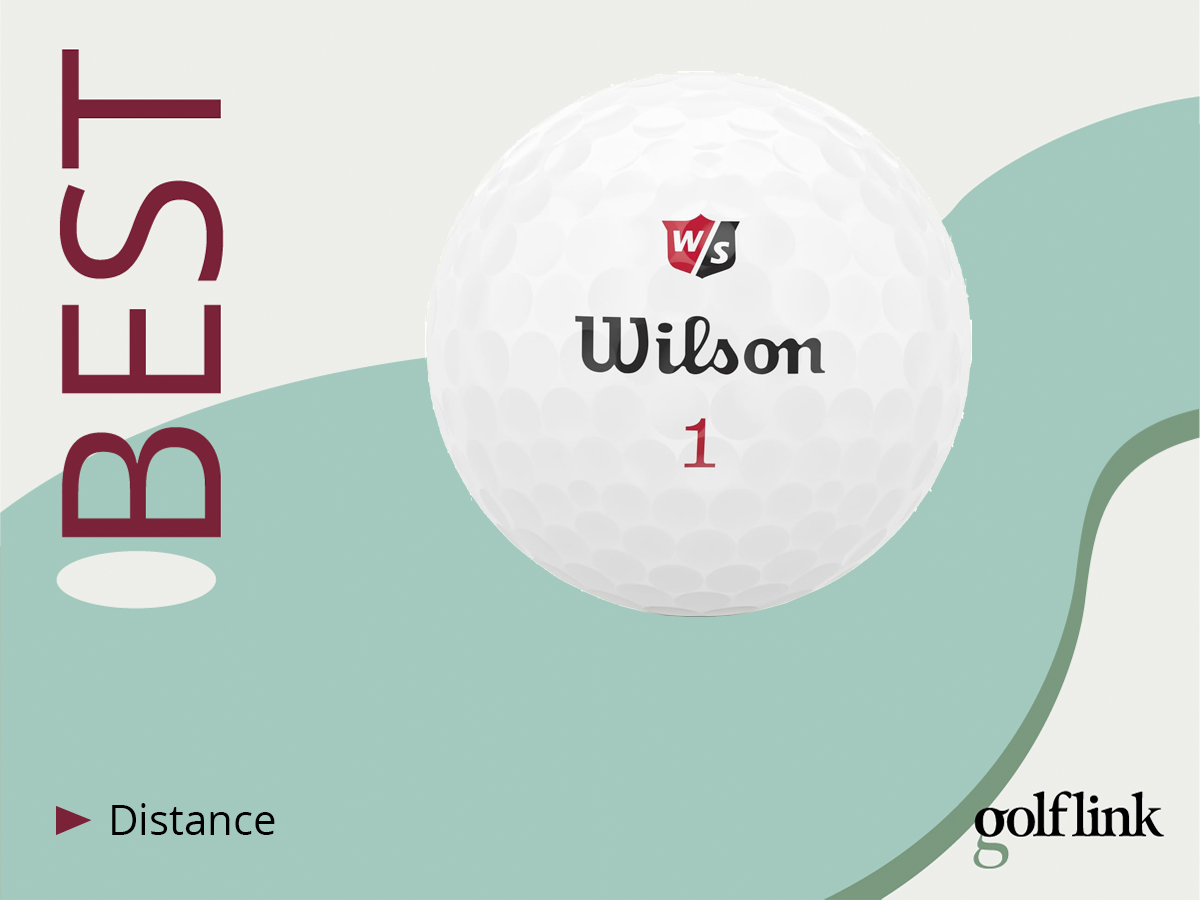
FIND ON AMAZON
Best for: Low to moderate swing speeds
Construction: 2-piece, ionomer cover
The Wilson Duo Soft is another example of a ball that performs better for slower swingers. This very low compression ball (Wilson claims that at 40, it's the softest on the market) really rebounds off of slower to moderate swing speeds of 85 to 100 mph, and seems to provide a little extra hop.
Plus, this ball has a really nice feel, holds greens, and feels pretty good in the short game and off the putter. Additionally, the spin is fairly low with the driver, so it goes pretty straight off the tee as well.
The Long & The Short of It
All golf ball manufacturers are trying to make balls that flirt with the golf governing bodies' legal distance limit, which is currently 317 yards (with a three-yard tolerance) with a driver clubhead speed of 120 mph, 2520 rpm, and a 10-degree launch angle. (The proposed new limit would basically impose that limit on 125 mph driver clubhead speed.)
In other words, nobody is making a short ball. Some are, however, shorter than others. If you’re looking for sheer distance, try one of the balls on this list that best fits your swing speed and scoring profile.

5 Facts About the Golf Ball Rollback You Can’t Argue